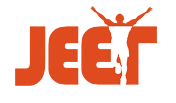Aan Sukandar
1*,
Bahtiar Hasan
2,
Tuti Suartini
3
- Program Pendidikan Teknologi Kejuruan, Sekolah Pasca Sarjana, Universitas Pendidikan, Indonesia
- Department Pendidikan Teknik Mesin, Universitas Pendidikan Indonesia, Jl. Dr. Setiabudi No. 229 Bandung, Indonesia
- Department Pendidikan Teknik Elektro, Universitas Pendidikan Indonesia, Jl. Dr. Setiabudi No. 229 Bandung, Indonesia
Abstract
The ability to read projection systems and describe projections of real objects in two-dimensional space are two important things that can lead potential engineering personnel to become professional vocational personnel in mechanical engineering. Therefore, this research is conducted to measure these abilities based on online learning activities in mechanical engineering drawing. There are two research variables used, namely reading and drawing on projection material. The quantitative descriptive method is used to process data on learning outcomes from these two variables collected from the online survey through structured assignments given to students. It can be concluded that the students could understand basic competency learning activities of projection images and complete drawing work which is distributed online properly. They could also complete the assignments according to the specified time given. Thus, drawing technique practices in the era of reality and virtual integration does not always require direct guidance from the supervisor. The online vocational education model can be developed for technology fields that require engineering technology skills in collaboration with the industry.
References
- Al-Qahtani, H., Aqeel, S., Barnieh, H., Gouba, A., Hjeij, D., Salem, M., and Kerr, T. (2013). An Investigation into the Preparation of High School Students to Pursue an Engineering Career. Procedia - Social and Behavioral Sciences. 102, 340-351.
- Ana, A. Trends in Expert System Development: A Practicum Content Analysis in Vocational Education for Over Grow Pandemic Learning Problems. Indonesian Journal of Science and Technology, 5(2), 71-85.
- Bhatia, S., Lad, K., and Kumar, R. (2018). Bend-optimal orthogonal drawings of triconnected plane graphs. AKCE International Journal of Graphs and Combinatorics. 15 (2). 168-173.
- Chang, C.H. (2012). Apply discovery teaching model to instruct engineering drawing course: Sketch a regular pentagon. Procedia - Social and Behavioral Sciences. 64, 457-488.
- Cremers, P. H. M., Wals, A. E. J., Wesselink, R., Nieveen, N., and Mulder, M. (2014). Self-directed lifelong learning in hybrid learning configurations. International Journal of Lifelong Education, 33(2), 207�232.
- Graham, C. R. (2006). Introduction to Blended Learning. Handbook of Blended Learning Global Perspectives Local Designs.
- Hrastinski, S. (2009). A theory of online learning as online participation. Computers and Education. 52(1), 78-82.
- Juhana, O., Suratman, M. (2000). Menggambar Teknik Mesin dengan standar ISO CV Pustaka Setia.
- Li, H., Zhou, D., Fang, L., and Dai, M. (2011). The application of blended learning in the teaching design of Computer Aided Design. In 2011 International Conference on Control, Automation and Systems Engineering, (CASE) (pp.1-3.IEEE.
- Mahazir I., I., Norazah, M. N., Ridzwan, C. R., and Azwin Arif, A. A. (2013). Relationship between the acceptance of mobile learning for AutoCAD course and learning style in polytechnic. Procedia - Social and Behavioral Sciences. 102, 177-187.
- Mustalikin, M. (2018). Flexible Box Untuk Meningkatkan Keterampilan Menggambar Teknik Sistem Proyeksi Amerika Dengan Menggunakan Pendekatan Scientific Pada Peserta Didik Kelas X.Bo.1 Di Smk Negeri Kebasen Semester 2 Tahun Pelajaran 2016/2017. Widya Komunika. 8 (1), 46-65.
- Nolker, H., and Schoenfeid, E. (1983). Berufsbildung untericht, Curriculum, Planungtle.
- Noriega, F. M. (2016). Handbook of Research on Engaging Digital Natives in Higher Education Settings. Handbook of Research on Engaging Digital Natives in Higher Education Settings.
- Oppermann, R. H. (1941). Technical drawing. Journal of the Franklin Institute, 231(1), 92-93.
- Park, Y. C. (2020). History of Korean education and the fourth industrial revolution. History of Education and Children�s Literature, 15(1), 431-444.
- Reinig, M. (2010). The theory and practice of online learning. Language, Learning and Technology. 14(1), 24-27.
- Salleh, Y., Minhat, N., and Baharuddin, R. (2017). Perception on the readiness of application mobile learning in digital technology education. Advanced Journal of Technical and Vocational Education 1(2), 41-45.
- Sampaio, A. Z. (2018). Historical evolution of technical drawing in engineering. In 3rd International Conference of the Portuguese Society for Engineering Education, CISPEE (pp. 1-9). IEEE.
- Sato, G. T. (2013). Menggambar Mesin: Menurut Standar ISO. PT. Pradnya Paramita.
- Sulardjohadi. (1984). Gambar proyeksi metode dan Macamnya.
- Setianingrum, M. (2017). Penggunaan Variasi Media Ajar Terhadap 3 Gaya Belajar Siswa Dalam Pembelajaran Bahasa Jepang. JAPANEDU: Jurnal Pendidikan dan Pengajaran Bahasa Jepang, 2(1), 1-8.
- Sutirja, S. (2019). Peningkatan hasil belajar peserta didik tentang membaca gambar teknik proyeksi ortogonal melalui penerapan model pembelajaran koperatif tipe student teams achievement division (STAD) di SMK Negeri 2 kota Bogor. Jurnal Teknologi Pendidikan, 8(1), 85-105.
- Trifunovi?, A., ?i?evi?, S., Lazarevi?, D., Dragovi?, M., and ?u?akovi?, A. (2019). Challenges and promises of mobile devices usage for spatial visualization skills assessment in technical drawing for engineering course. Advances in Intelligent Systems and Computing, 809, 1740�1750.
- Van Bruggen, J. (2005). Theory and practice of online learning. British Journal of Educational Technology, 36(1), 111-112.
- Waluya, S., and Wiyono, A. (2015). Pengaruh media pembelajaran menggunakan program sketchup terhadap kemampuan menggambar proyeksi ortogonal siswa di SMK Negeri 2 Surabaya. Jurnal Kajian Pendidikan Teknik Bangunan, 3(3), 57-74.

